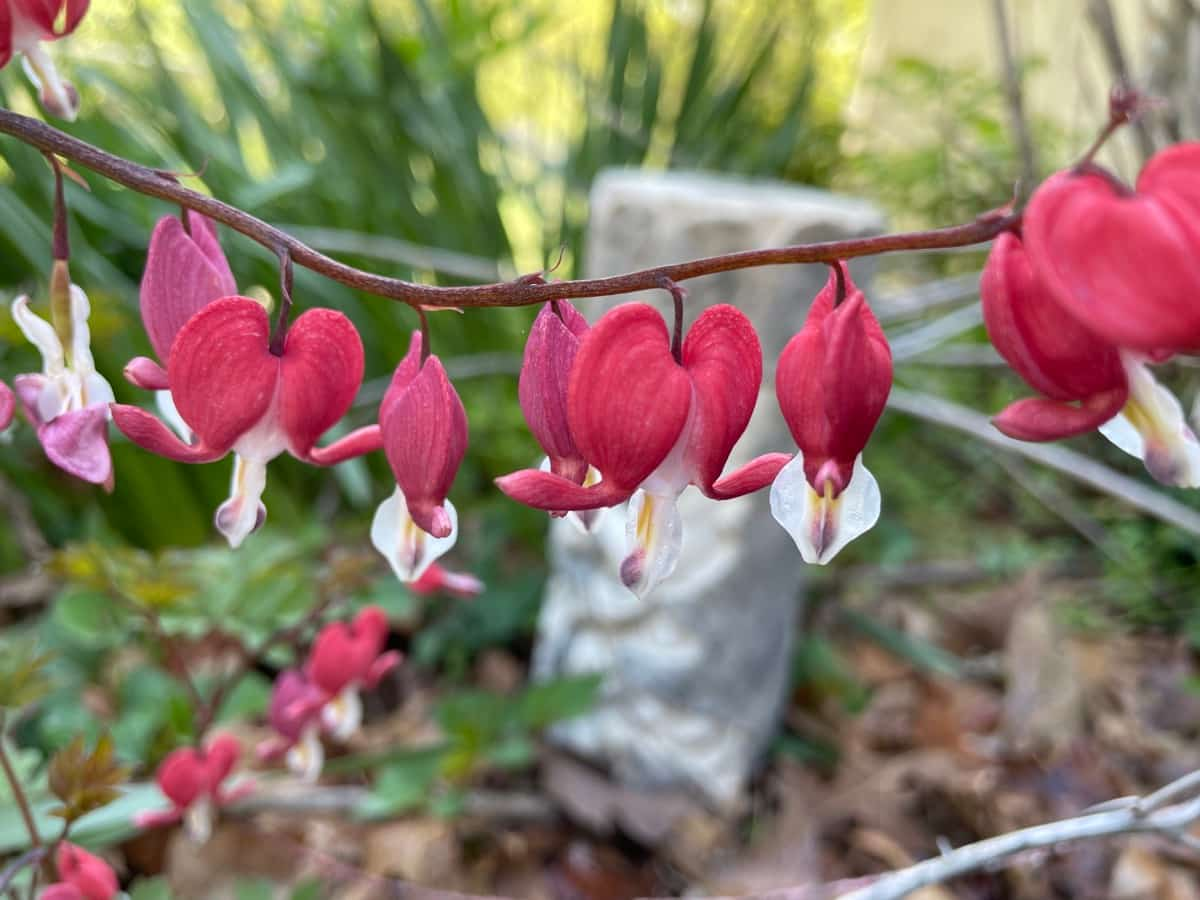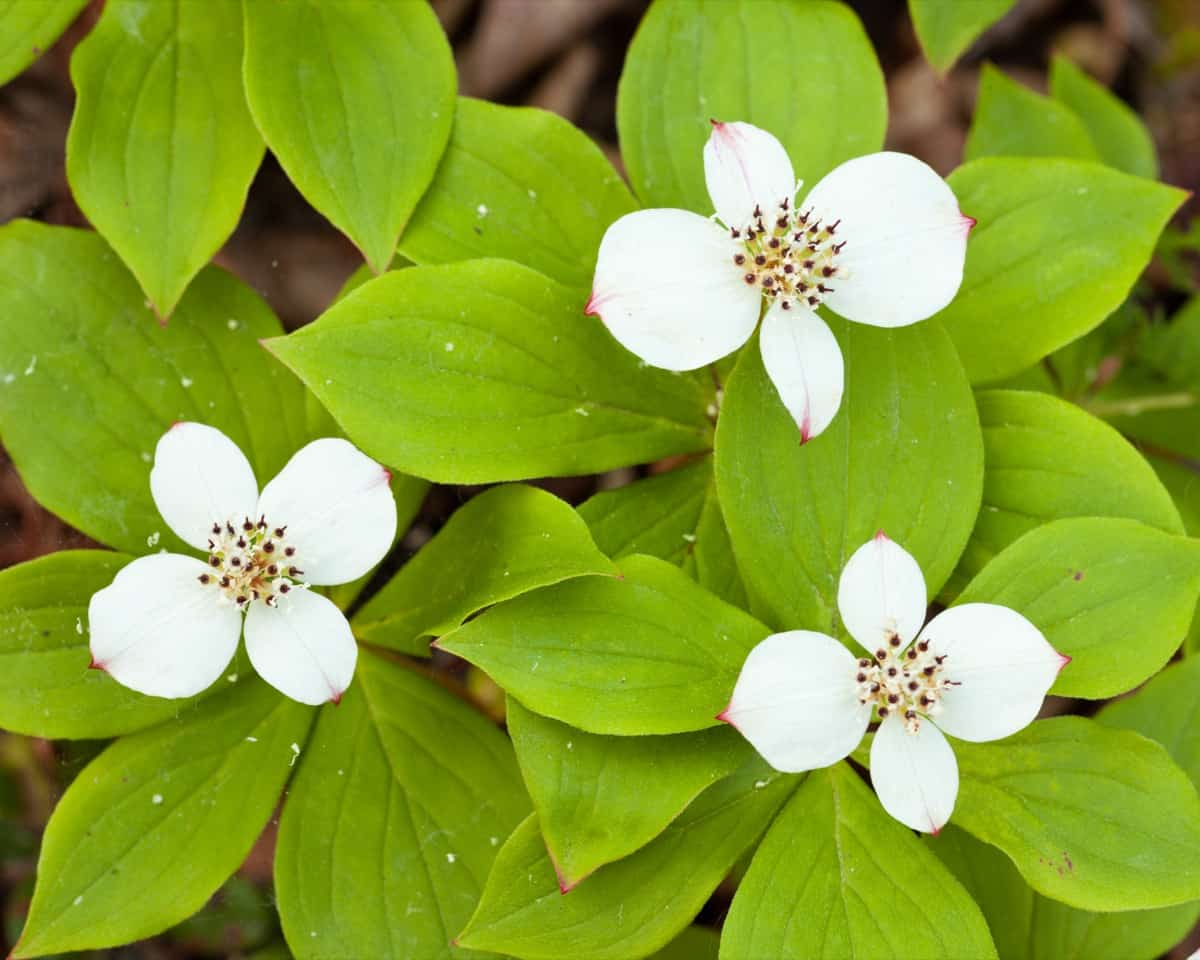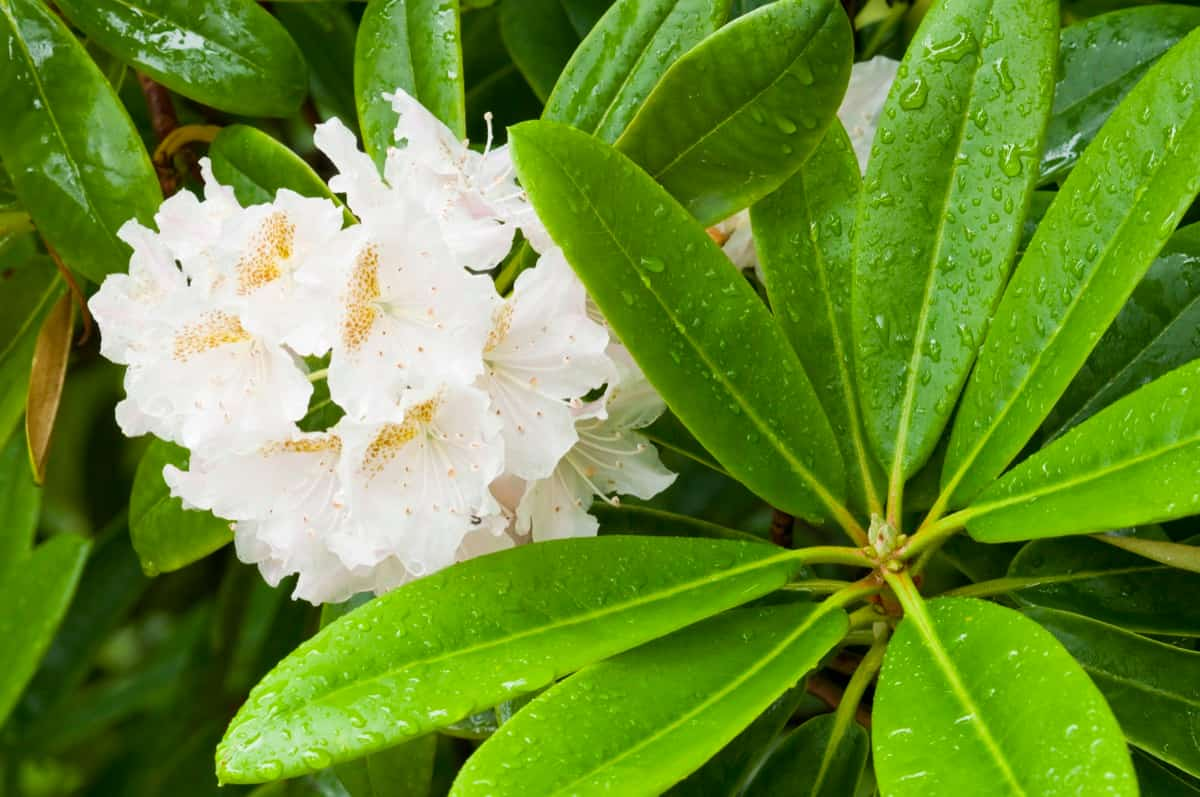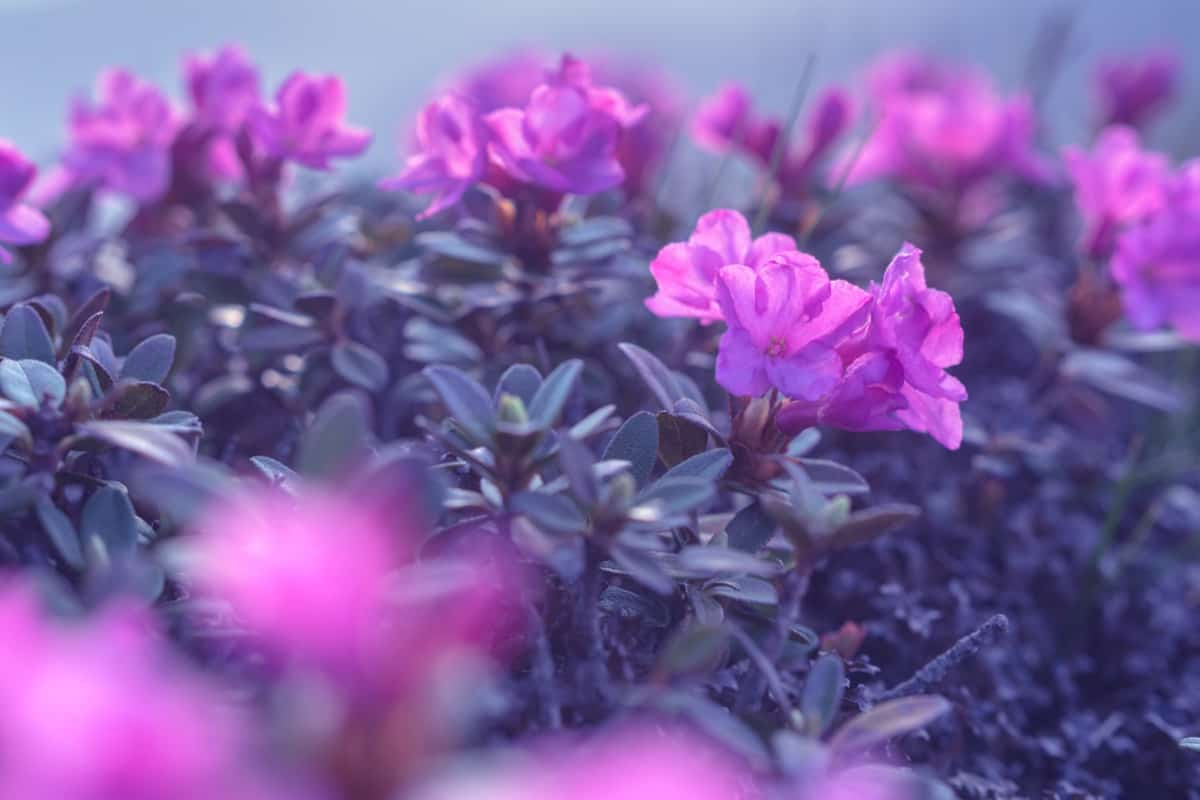The pH of the soil is one of the most important factors in determining what plants will grow well in an area. Soil with a pH below 7 is considered acidic, and soil above 7 is considered alkaline. Many plants prefer slightly acidic soils, but few can tolerate highly acidic soils. When choosing plants for acidic soil, it is important to consider their native habitat. Plants naturally growing in acidic soils are more likely to tolerate those conditions.
Additionally, it is important to choose plants appropriate for the soil’s acidity level. There are a few key things to remember regarding plants that grow well in acidic soil. First, remember that different plants have different pH preferences, so it’s important to know the ideal range for the plant you’re growing. Secondly, remember that soil acidity can fluctuate over time, so it’s important to test your soil regularly and adjust your watering and fertilizing accordingly.
Several ways to increase the soil’s acidity include adding sulfur or other amendments to lower the pH or planting in raised beds lined with plastic sheeting to prevent leaching. Suppose you have an extremely large area that you want to make more acidic. In that case, you can also lower the pH by turning over the top layer of sod and applying ammonium sulfate or another fertilizer designed for acid-loving plants.
Plants That Grow Well in Acidic Soil
Acid-Loving Plants that Grow Well in Acidic Soil
Bleeding Hearts
Bleeding Hearts are among many flowers that grow well in acidic soil. This shade-loving plant has delicate, fern-like foliage, producing heart-shaped blooms that dangle from slender stems. Bleeding Hearts bloom in shades of pink, red, and white and prefer cool weather. They are a great choice for adding color to shady garden areas. They have a deep root system that helps them access nutrients and water other plants can’t reach. They’re also tolerant of acidic soils, so they can grow in areas where other plants would wilt and die.
In case you missed it: 9 Best Berries to Grow in Containers: Well Explained in Simple Steps

Japanese Pachysandra
This species is an ornamental plant for its dense foliage and ability to thrive in shady conditions. Pachysandra plants prefer acidic soil with a pH of 5.5-6.5. They are tolerant of low-light conditions and can even grow in full shade. Pachysandra is a slow-growing plant, but it can reach up to 2 feet in height and spread up to 3 feet wide. Japanese Pachysandra is an ideal groundcover plant for garden beds and borders. It can also be used as a ground cover under trees and shrubs. Pachysandra plants are relatively low-maintenance and require little pruning or fertilizing once established.
Blue Ageratum
Blue Ageratum is a popular annual flower that blooms in summer and fall. The blue flowers are borne on top of stiff, erect stems. Plants grow to about 2 feet tall and wide. It’s a heat-loving plant that does best in full sun but can tolerate some light shade. Blue Ageratum is not particular about soil type as long as it drains well.
In case you missed it: Best and Worst Companion Plants for Basil

It’s a good choice for planting in acidic soils because it tolerates low pH levels. Blue Ageratum is a beautiful flowering plant that does well in acidic soil. The Blue Ageratum flowers are loved by bees and butterflies and make a great addition to any garden. It is drought tolerant and does not need much water once established.
Bunchberry
Acidic soil is found in many places throughout the world, and as a result, many plants have adapted to growing in these conditions. This low-growing perennial has pretty white flowers that bloom in early summer, followed by red berries. Bunchberry spreads by sending underground runners to form a dense ground cover quickly. It’s an excellent choice for planting under trees or in other shady areas where grass won’t grow. The Bunchberry is a low-growing plant that typically only reaches a height of 4 to 6 inches.
In case you missed it: Best Ways to Prevent Pesky Slugs and Snails in Your Garden Plants

It has dark green leaves arranged in fours around a central stem. In late spring or early summer, the plant produces small white flowers that grow in clusters. These flowers are followed by bright red berries, which ripen in late summer or early fall. The Bunchberry is an easy plant to grow and care for, and it is often used as an ornamental plant in gardens and landscaping. It prefers acidic soils with a pH of 4.5-5.5 but can also tolerate neutral soils. The plant does not tolerate drought well, so it needs to be grown in an area with adequate moisture.
Azalea
Azaleas are the best addition to any garden and thrive in acidic soil. This means they are perfect for growing in areas with a pH of 4.5 or below. Azaleas require little maintenance and are relatively drought-tolerant, so they are a great choice for busy gardeners. When planting Azaleas, amend the soil with organic matter to help retain moisture.
In case you missed it: Insect Pests of Rose Plants: Chemical, Organic, and Natural Control Management

Mulching will also help keep the roots cool and moist during hot summer days. Azaleas are a popular choice for acidic soil gardens. Azaleas prefer partial sun to partial shade and moist, well-drained soils. However, they tolerate full sun if given enough water. Be sure to mulch around Azaleas to help retain moisture and keep down weeds.
Dogwood Trees
Dogwood trees are one of the best choices for acidic soil. They tolerate many pH levels and do not require many nutrients. Dogwoods are also relatively drought-tolerant, making them a good choice for fewer rainfall areas. Dogwoods have opposite, simple leaves and clusters of small, four-petaled flowers. Some species also have showy, brightly-colored stems. Dogwoods tolerate acidic soils and can even thrive in soils with a pH as low as 4.5. They prefer moist conditions but can tolerate periods of drought. Dogwoods are also relatively resistant to pests and diseases.
Rhododendrons
Rhododendrons flowers are typically large and showy, making them popular ornamental plants. Rhododendrons need acidic soil to thrive. If it is not naturally acidic, you can amend your soil with sulfur or other acidic amendments. Rhododendrons prefer a pH of 4.5 to 5.5. They will grow in slightly higher or lower pH ranges but may not flower as well. When planting Rhododendrons, be sure to choose a location that has good drainage.
In case you missed it: How to Make Grass Clippings Compost Fertilizer: Homemade Recipe, DIY for Container, Indoor, and Backyard Garden Plants

Rhododendrons do not like wet feet and quickly succumb to rot if their roots are constantly wet. If you have heavy clay soil, raised beds or mounds can improve drainage around the roots of your Rhododendron plants. Rhododendrons need regular watering during the growing season, especially if planted in full sun. Mulching with organic material such as pine straw or bark mulch can help retain moisture in the soil and keep roots cool on hot summer days.
Magnolia Trees
Magnolia trees are a beautiful addition to any garden and one of the few trees that can thrive in acidic soil. These trees are tolerant of a wide range of soils, but they prefer slightly acidic conditions. If you live in an area with a lot of rain, Magnolia trees are a good choice for your garden because they are resistant to root rot.
Magnolia trees are a beautiful addition to any landscape. They are also one of the few trees that can tolerate acidic soil. The key to growing a Magnolia tree in acidic soil is to make sure the soil is well-drained and has a good amount of organic matter. Mulch around the tree with organic material such as pine needles or bark to help keep the soil moist and acidic.
Holly Plants
Holly plants are one of the few plants that prefer acidic soil. This is because Holly plants have a shallow root system that doesn’t penetrate deep into the ground, so they can’t access the deeper nutrients in the soil. Holly plants also have a high tolerance for drought, so they’re a good choice for areas that don’t get a lot of rainfall. Holly plants are a great option for those looking to add some greenery to their acidic soil.
Hollies are known for their glossy, dark green leaves and red berries, which make them a popular choice for holiday decorating. While Holly plants prefer acidic soil, they also tolerate neutral to slightly alkaline soils. However, if the soil is too alkaline, the leaves of the Holly plant will begin to yellow, and the plant will become stunted.
Oakleaf Hydrangea
Oakleaf Hydrangeas tolerate many soil conditions but prefer slightly acidic soils with a pH of 6.0 to 6.5. Oakleaf Hydrangeas are easy to grow and care for and make an excellent addition to any garden or landscape. Oakleaf hydrangeas are characterized by their large, showy flowers that bloom in late spring and early summer. The oakleaf Hydrangea leaves are large and deeply lobed, giving them a distinctive oak-like appearance.
In case you missed it: 15 Types of Philodendrons to Grow Indoors

Oakleaf hydrangeas are relatively low-maintenance plants that will thrive in most gardens with little care or attention. They require full sun to partial shade and should be watered regularly during the growing season. These shrubs tolerate drought and salt spray, making them ideal for coastal locations. Oakleaf hydrangeas can be propagated by rooting stem cuttings in spring or summer.
Bottlebrush Shrubs
Bottlebrush shrubs are a great choice for acidic soil, as they tolerate dry and wet conditions. Bottlebrush shrubs have long, slender leaves often covered in small oil glands. The flowers of Bottlebrush shrubs are usually red but can also be white or pink. Bottlebrush shrubs can grow quite large, so give them enough space when planting.
If you’re looking for a shrub that will thrive in acidic soil, look no further than the Bottlebrush. This plant tolerates poor soils and produces abundant beautiful, brush-like flowers. They’re also easy to care for, requiring little more than regular pruning and occasional watering.
Viburnum Bushes
Though many plants prefer acidic soils, Viburnum bushes are a particular favorite. Not only are they easy to grow and maintain, but they also provide a beautiful addition to any garden. There are many species of Viburnum, so you’re sure to find one that suits your needs. Viburnums are relatively low-maintenance plants, which is another reason why they’re so popular. They don’t require a lot of water or fertilizer, and they can even tolerate partial shade. If you’re looking for a beautiful, easy-to-grow plant for your acidic soil, look no further than the Viburnum bush.
Viburnum bushes are great for those looking to add color and interest to their acidic soil garden. Wide varieties of Viburnum are available, so there will surely be one that will fit your needs. Some Viburnum bushes are evergreen, while others lose their leaves in the winter. Some have beautiful flowers, while others have interesting berries. No matter what you are looking for, there is a Viburnum bush that will be perfect for your garden.
Conclusion
Acidic soil is not ideal for growing plants, but some plants tolerate acidic conditions. If you have acidic soil, choosing the right plants for the conditions is important. Plants not tolerant of acidic soil will not thrive and may even die. If you have acidic soil, it’s important to test the pH levels and adjust accordingly. These plants can thrive in even the most challenging soils with proper care.
- Gardening Techniques in Planting Vegetables
- Where to Place Indoor Plants in Your Home
- How to Grow Tomatoes Organically at Home: A Comprehensive Guide
- Organic Gardening on a Budget: Low-Cost Methods and Materials
- Gongura Seed Germination and Planting Methods
- Cabbage Seed Germination and Selection
- Broccoli Seed Germination and Selection
- Asparagus Seed Germination and Variety Selection
- Seasonal Flower Gardening: Best Practices for Spring, Summer, Fall, and Winter
- How to Grow Hibiscus from Flower
- Plantation Ideas for Home Decoration: A Beginners Guide
- Flower Garden Designs and Layouts for Beginners
- Planting and Spacing Techniques in Papaya: A Beginner’s Guide
- Growing Gold: Essential Techniques for Planting Pineapples
- How to Make Kalanchoe Plant Bushy: Home Remedies and Solutions
- 11 Reasons Why Your Gardenia is Not Blooming: Home Remedies and Solutions
- Eco Elegance: The Guide to Designing a Drought-Tolerant Landscape
- Gardening on a Slope: Strategies for Hillside Landscaping
- Nourish and Flourish: Top Organic Mulches for Thriving House Plants
- Everything You Want to Know about Indian Mogra Flower: Discover Uses and Growing
- Green Thumb Success: Expert Tips for Cultivating Greenhouse Pumpkins All Year Round
- Maximize Growth & Flavor: The Ultimate Guide to Companion Planting in Herb Gardens
- How to Control Rhododendron Problems Naturally: Home Remedies and Organic Ways to Fix Them
- Natural Magic: The Remarkable Benefits of Cinnamon for Plants
- Best Steps to Revive Dying Tulip with Natural and Organic Treatment
- 10 Reasons Why Your Angel Trumpet is Not Blooming: Remedies and Treatment
- How to Fix Periwinkle Leaf and Flower-Related Problems: Natural Remedies and Solutions
- How to Fix Zinnias Leaf and Flower Problems: Discover Natural and Home Remedies
- Organic Steps to Induce Lemon Tree Flowers: A Comprehensive Guide
- Bloom Booster: Crafting the Perfect Homemade Bougainvillea Fertilizer
- Optimizing Growth: A Guide to Applying NPK Fertilizer for Potted Plants
- 10 Best Homemade Fertilizers for Rubber Plant: DIY Recipes and Application Method
- How to Boost Female Pumpkin Flowers: Effective Steps for More Flowers and High Yields
- Transform Your Indoor Garden: Top Benefits of Pink Salt for Houseplants
- 10 Best Homemade Fertilizers for Peacock Plants (Calathea): Easy DIY Guide
- Unlock Blooms: 9 Reasons Why Your Potted Chrysanthemum is Not Blooming